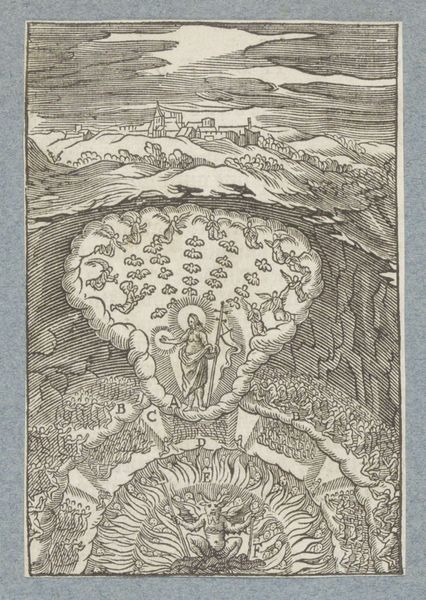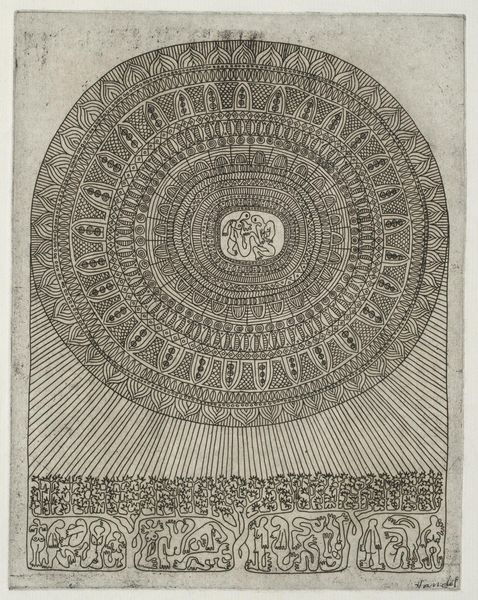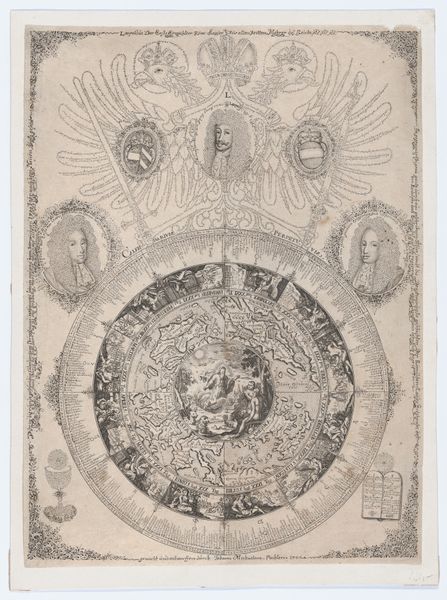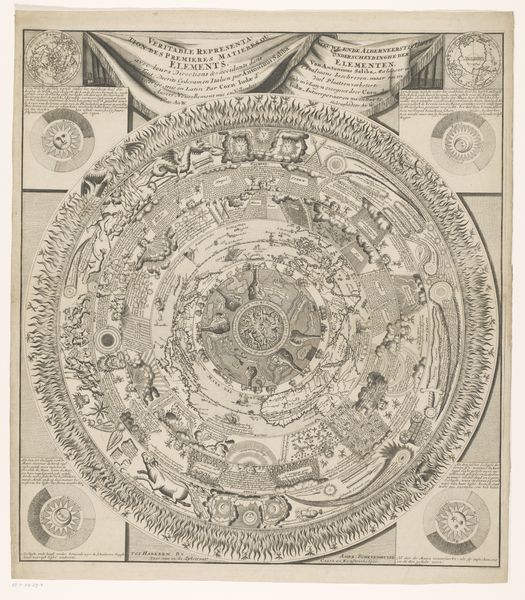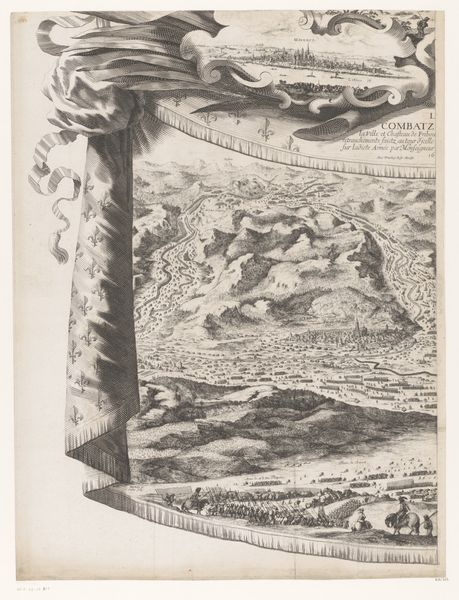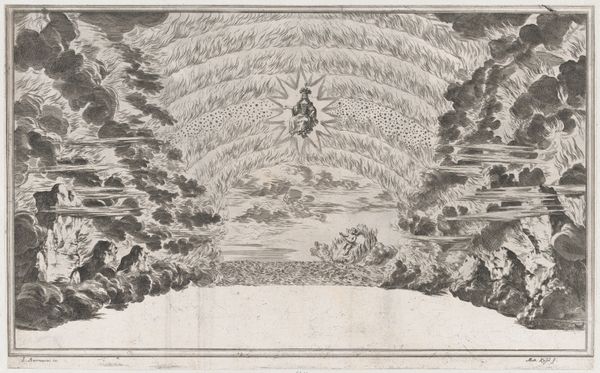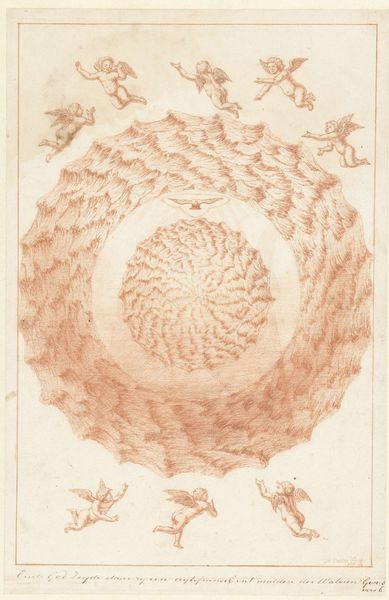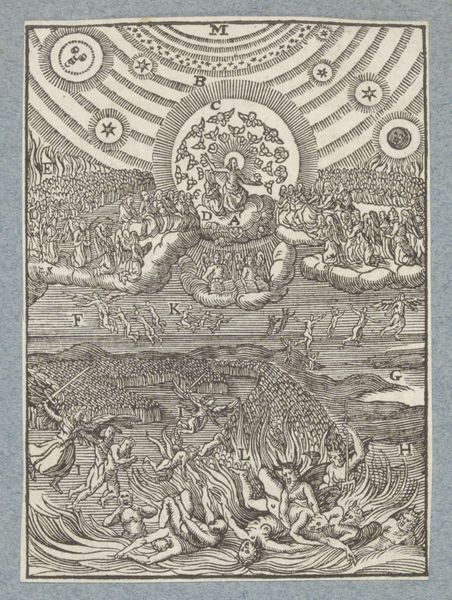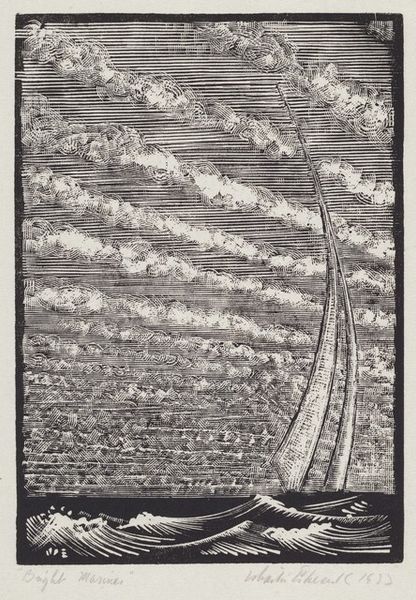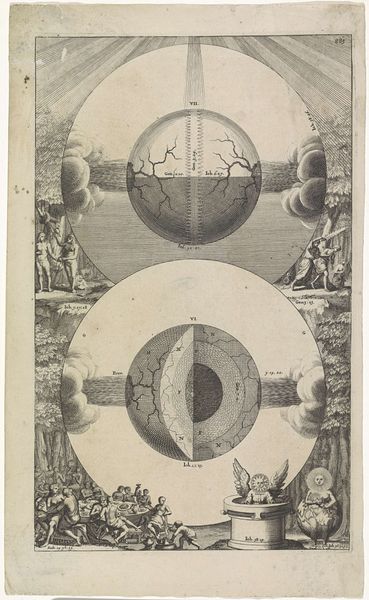
Dimensions: height 231 mm, width 144 mm
Copyright: Rijks Museum: Open Domain
Curator: Look at this intricate engraving, "Lazarus in Heaven and the Rich Man in Hell," crafted in 1593 by Wierix. It resides here at the Rijksmuseum. Editor: My initial reaction is one of overwhelming darkness—a descending vortex constructed with incredibly fine lines, isn't it? A rather stark rendering of divine justice. I am curious to know how he physically produced such detail. Curator: The artist employs engraving and etching. Consider the socio-political backdrop. This print emerges in the late 16th century; what’s compelling to me is the implicit commentary it offers on the existing structures of power through its distinct visualisation of moral inequity and its inescapable ramifications for social mobility and reform in the world beyond mortality. Editor: Yes, this kind of layering would involve an arduous etching process. Each of those minute details had to be physically etched into the plate, with attention to how the light will reflect off each mark, right? You think of the work and labor that goes into these representations of eternal toil. Curator: Indeed. Note how Wierix, through the lens of his religious belief, illustrates Lazarus, symbolizing piety, enjoys divine favour—juxtaposed with the rich man, his wealth rendered insignificant, tormented in eternal damnation. These representations solidified cultural anxieties, reinforcing societal norms regarding material indulgence versus spiritual rectitude. Editor: Absolutely. There's almost a tangible quality to the hell depicted. What about its influence in material terms? Did its reception affect contemporary philanthropy or public giving for example? How does its narrative impact people’s real actions? The use of print meant relatively wide dispersal of such images was becoming possible in society at that point. Curator: Undoubtedly. It's influence permeates beyond the immediate, impacting social conscience and philanthropic leanings. We begin to see how religious art served as a medium to encourage specific, real-world behavior—even beyond faith. Editor: Thinking about this laborious production process really underscores how carefully considered its themes would be, right down to the individual mark on that plate. Thank you; I now feel I can approach its layers of material meaning in relation to this social context. Curator: My pleasure. It truly illustrates how even in apparent spiritual depiction, social criticism takes form and changes behaviors and perspectives of society in turn.
Comments
No comments
Be the first to comment and join the conversation on the ultimate creative platform.

